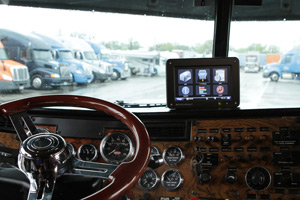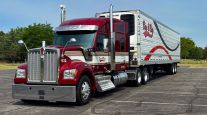Managing Editor, Features and Multimedia
ELDs Are Coming; Don’t Be Left in the Dust

It’s been discussed, debated and awaited for years, but the federal mandate for electronic logging devices has finally taken shape. After several delays, the Federal Motor Carrier Safety Administration last month published a final rule that will require commercial carriers to replace paper logbooks with ELDs designed to automatically record drivers’ hours of service.
Although the rule is being challenged in court, it is scheduled to go into effect in December 2017, which would give carriers and technology suppliers two years to prepare.
BEST OF JANUARY iTECH: More stories, columns
It appears that in most cases, fleets that already have made the transition to electronic logs likely would be able to comply with the rule through software updates for their current systems rather than switching to new hardware.
However, carriers that have not yet installed logging devices in their trucks would need to do so in the next 23 months.
While that may sound like plenty of time, first-time adopters of onboard technology should not underestimate the amount of work that lies ahead.
First, they will need to investigate the many different types of ELDs on the market, weigh the costs and benefits and decide which option is best for their operations.
Once carriers select a system, they face the task of implementing it across their fleets.
Another important step that shouldn’t be overlooked is ELD training for drivers and dispatchers who may be unfamiliar with them.
Procrastinators who wait until the final months to begin this process could find themselves struggling to manage a rushed ELD implementation.
The time to start planning is now.
A wide array of ELD products is available today, and the menu of options will surely expand as suppliers look to serve the vast market created by the rule.
Some suppliers offer fleet-management systems that provide not only electronic logging but also a plethora of other applications, such as driver and vehicle performance monitoring, communications, miles-per-gallon and vehicle-location tracking, truck-specific navigation, fleet analytics and a host of regulatory compliance features.
Fleets also can choose simpler, lower-cost ELDs that bring them into compliance with the mandate but do little else.
In between those two extremes, some trucking companies may implement platforms that let them start out with electronic logs only but still give them the option to purchase additional applications later that can run on the same devices.
Different hardware options also are available for ELD adopters. Some systems continue to use traditional, fixed-mount displays installed in the cab, but a growing number of ELD products utilize mobile devices — especially tablets. Regardless of the hardware used, a compliant ELD must interface with the engine’s electronic control module to automatically capture when the engine is on, when the vehicle is in motion and how many miles it travels.
Separately, for those wondering why the “face” in The Interface has changed this issue, allow me to quickly bring you up to speed. I will be editing iTECH moving forward as part of my new role as technology editor for Transport Topics.
You may recognize my byline from stories that have appeared in iTECH and Transport Topics over the past four years. For most of that time, I was a TT staff reporter covering predominantly technology and equipment news.
In my new position, I’m following in the footsteps of Bruce Harmon, who recently retired after 15 years in various editing roles at Transport Topics, including editing this supplement to TT for four years.
Moving forward, iTECH will continue to provide insightful coverage of new developments, issues and trends across the broad scope of trucking technology, whether it’s in the back office or on the vehicle. Readers will hear from industry experts, technology developers and the transportation providers who are using technology to help move the nation’s freight safety and efficiently.
We live in a fascinating time for trucking’s growing technology sector. The industry continues to improve operations by collecting, transmitting and analyzing ever-more data from engines, components and devices in and around the truck, and the next wave of technological advancement could give rise to trucks capable of autonomous driving and platooning.
I hope you’ll follow along as we continue to chronicle these developments in the months and years ahead. Feel free to contact me with ideas and feedback at 703-838-1795, sclevenger@ttnews.com or @SethClevenger on Twitter.




